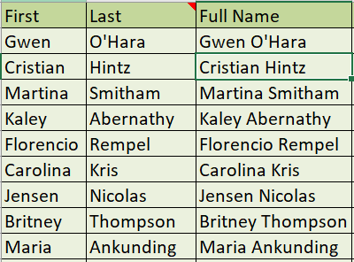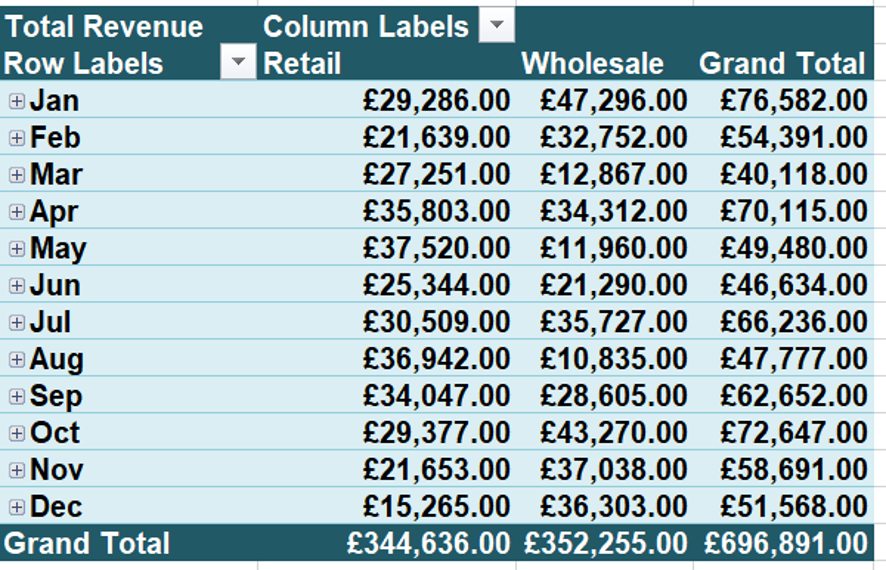Not everyone loves working with numbers and calculations or finds it easy, and whilst it’s important at work and home, a lot of us find that we’re put off even starting with Excel because it’s all about maths, right?
In fact, whilst Excel has some really useful mathematical formulas available, there is so much you can do without needing them. The non-mathematical features can be really powerful. I love Excel even though I find the numbers daunting.
Happy has created a course called Excel Without Maths that will guide you through how to set your data up easily using smart and easy-to-use tools like Flash Fill and Data Validation so that it flows nicely and is ready to analyse.
Here are three tools you can use in Excel that do not use maths, and will increase your productivity and save you time.
1. Flash fill
You can use clever tricks like flash fill to tidy up your data and turn it from this:

To this:

In just two clicks!
2. Pivot Tables
Imagine taking a long list of data records and turning them into a neat summary inside of five minutes and without a mathematical calculation in sight (Excel simply does them for you).
You would start with a list, in this case a list of sales. The list consists of individual records, detailing transactions for each product in every region. The sales are either retail or wholesale. It’s not easy to make sense of trends in here. We might want to ask questions like: What were the sales by month for retail versus wholesale? It sounds like a daunting task, but in fact it can be done with minimal effort.
Take this list:

And turn it into something much more meaningful that summarises what the data is telling you, like this:

Pivot Tables and Subtotals can create summaries and in-depth analysis with a few clicks – and you don’t need to go near a formula!
3. Range names
Have you ever despaired at being able to get your Excel spreadsheet to print on a manageable number of sheets?
It’s great that Excel is not confined to an A4 sheet like a Word document is; it means we can store huge amounts of data in there. It also means that you have to do a bit of work to make it print well.
On this course we’ll also look at using named ranges along with the print settings to get large sheets to print well.
Find out more ways to improve your productivity without maths
If you find Excel daunting, then our new Excel Without Maths one-day course is for you. You will learn these three tools, as well as:
- Ways to tidy up spreadsheets using Data Validation.
- Learn to produce reports in a more visually appealing way.
- Save time analysing your data with Charts, Pivot Tables and Subtotals and feel in control.
You will learn loads of exciting tips that will help you become more productive at work. And yes, all without any dreaded maths!





















